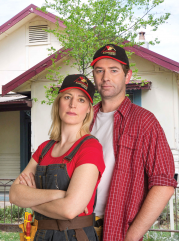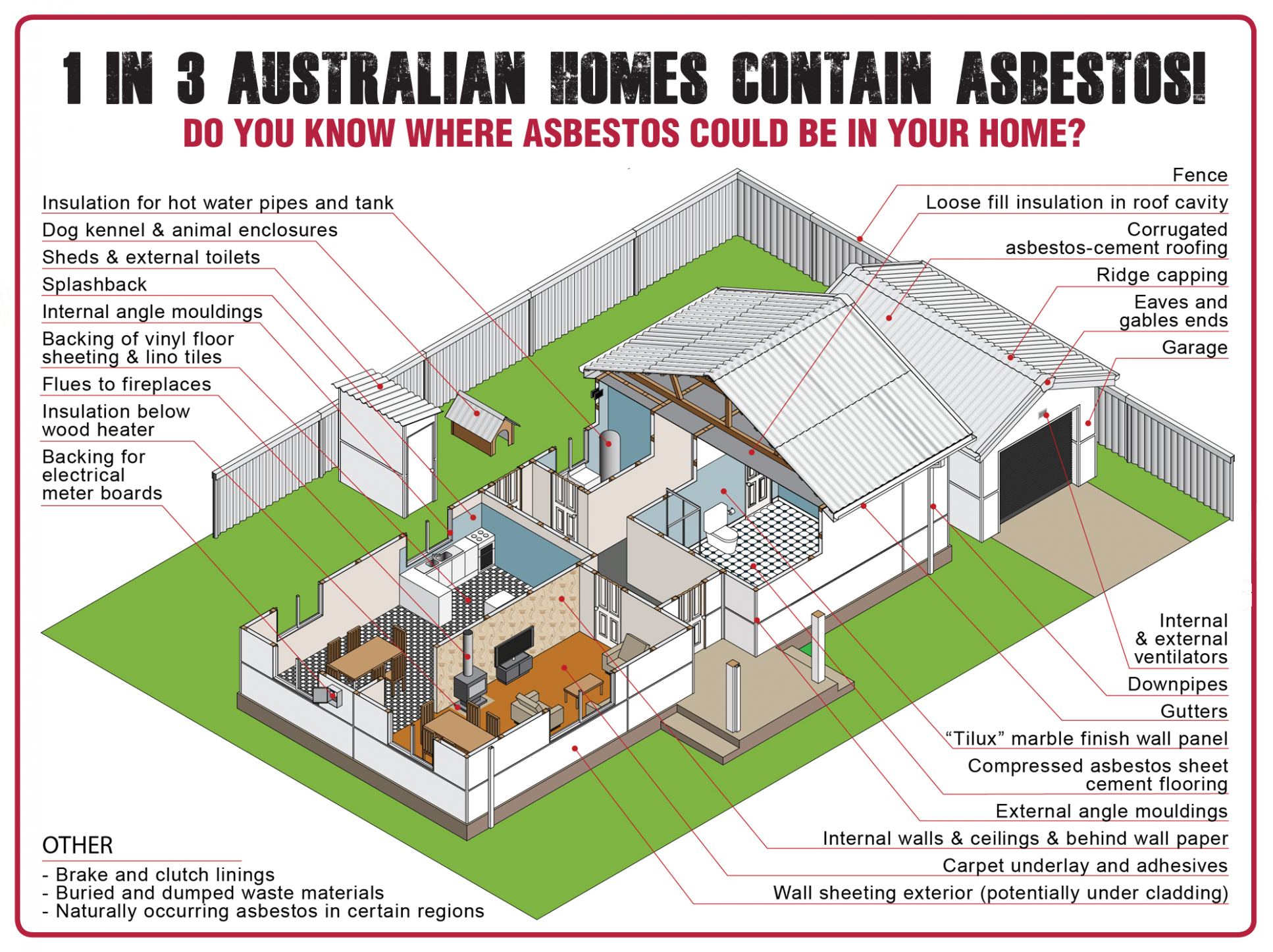SYDNEY - Nov. 1, 2022 - PRLog -- During National Asbestos Awareness Month (1–30 November) the Asbestos Education Committee aims to increase essential awareness of the ever-present danger of asbestos when renovating or maintaining homes, particularly amid the continued record-breaking building and renovation boom and tradie shortage with concerns growing homeowners are taking avoidable risks with asbestos, jeopardising their health and the health of others when doing DIY renovations.
Over 4,000 Australians die annually from asbestos-related diseases; around 265% more than Australia's annual road-toll, so with asbestos-containing materials remaining in homes built or renovated prior to 1990, it's vital DIYers, homeowners, renovators and tradies heed the warnings and respect the serious dangers of asbestos because it's not worth the risk!
Clare Collins, Chair of the Asbestos Education Committee said, "Asbestos Awareness Month aims to reduce the incidences of avoidable asbestos exposure to prevent asbestos-related diseases by providing Australians with essential information to help save lives.
"While asbestos-containing materials remain in one-third of Australian homes, the importance of this month-long campaign cannot be overstated.
"And with health experts predicting a continued rise in third-wave asbestos-related diseases as a result of exposure to asbestos-fibres when renovating or maintaining old properties; the Australian Mesothelioma Registry data on exposure; and the growing popularity of renovating and current tradespersons shortage; homeowners must respect the serious risks posed by asbestos mismanagement," she said.
Cherie Barber, Australia's Renovation Queen™ who lost her Grandfather to asbestos-related diseases is a long-time Ambassador for the National Asbestos Awareness campaign who is passionate about ensuring homeowners and DIYers learn to respect asbestos risks to stay safe.
"Many homeowners wrongly believe that asbestos-containing products are only found in fibro homes made from asbestos-cement sheeting," said Ms Barber.
"The fact is, asbestos was used extensively in the manufacture of more than 3000 building and decorator products that can still be found in brick, fibro, weatherboard, clad homes, apartments or sheds built or renovated before 1990.
"Many of these products could be lurking under floor coverings including carpets, linoleum and vinyl tiles, behind wall and floor tiles, in cement floors, internal and external walls, ceilings and ceiling space (insulation), eaves, roofs, around hot water pipes, fences, home extensions, garages, outdoor toilets, backyard and farm structures, chook sheds and even dog kennels. It was used everywhere!" Ms Barber said.
If undisturbed, well maintained and in a stable, sealed condition, these products are considered unlikely to pose health risks. However, if disturbed during maintenance, renovation or demolition, and invisible fibres are released that can be inhaled, this can lead to asbestos-related diseases including malignant mesothelioma, lung cancer, asbestosis and benign pleural disease.
There is no cure for mesothelioma, a cancer which can develop between 33-44 years after inhaling asbestos fibres. The average survival time following diagnosis, just 12 months.
With growing evidence suggesting the current occurrences of asbestos-related diseases are as a result of exposure to asbestos fibres during DIY and renovations, and with more people, specifically women, diagnosed as a result of inhaling fibres in non-occupational settings; every homeowner, renovator and tradie must respect asbestos and learn how to identify asbestos-containing products to manage and dispose of them safely in line with regulations.
"Australia was among the highest consumers of asbestos products in the world so it's not surprising these potentially hazardous products are still commonly found in at least 1-in-3 Australian homes," said Ms Barber.
"Because there is no known safe level of exposure to asbestos fibres, without knowing where asbestos might lurk in and around properties or knowing how to manage it safely, people could be playing 'Renovation Roulette', risking their health and the health of families and bystanders if they fail to respect asbestos and disturb these hazardous materials."
"With the popularity of renovating continuing to rise coupled with the current tradie shortage, we want to ensure people renovate safely. We don't want people to take the 'she'll be right' approach and start ripping out old floor coverings, wall and floor tiles or undertaking any work or demolition without first checking to see if asbestos might be lurking in their home," she said.
"Complacency poses the greatest risk of all so it's vital people learn to respect asbestos as a real and present danger and learn how to manage it safely by visiting Australia's most comprehensive, trusted source of asbestos information, asbestosawareness.com.au," Ms Barber said.
The website offers extensive information including:
- Asbestos Product Database
- Asbestos Awareness – 20 Point Safety Check gives information on the risks and how to manage asbestos safely.
- Fact Sheets for
- Homeowners
- Tradies
- Farmers
- Commercial/Non-residential Property Owners/Managers
- Naturally Occurring Asbestos
- Asbestos Awareness Residential Property Checklist – A Homeowner's Guide to Identifying Asbestos-Containing Materials
"When it comes to asbestos, renovators should expect the unexpected! If you find asbestos in your home, don't cut it! Don't drill it! Don't sand it! Don't saw it! Don't scrape it! Don't scrub it! Don't dismantle it! Don't tip it! Don't waterblast it! And whatever you do, don't dump it!" she said.
https://vimeo.com/634115169
https://vimeo.com/634130841
Contact
Asbestos Education Committee
***@insightcommunications.net.au
Photos: (Click photo to enlarge)




Read Full Story - National Asbestos Awareness Month urges homeowners, renovators and tradies to respect asbestos because it's not worth the risk! | More news from this source
Press release distribution by PRLog
